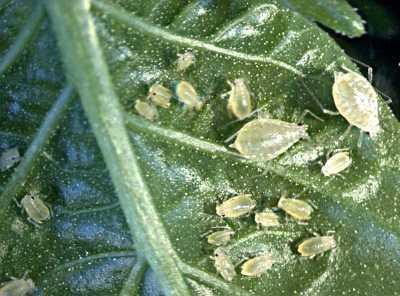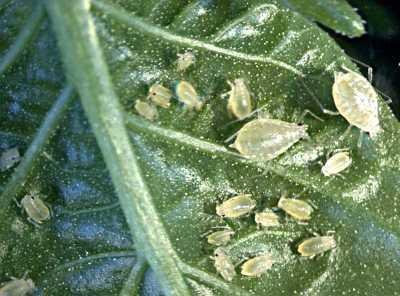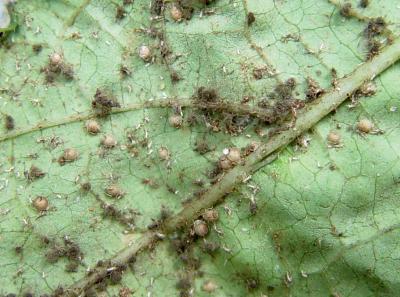Featured Photo

Other Photos


notes
Main aphids in Africa: Black bean aphid ([i]Aphis fabae[/i]), Cabbage aphid ([i]Brevycoryne brassicae/Myzus persicae[/i]), Groundnut aphid ([i]A.craccivora[/i]), Cotton aphid ([i]A.gossypii[/i]), Russian wheat aphid ([i]Diuraphis noxia[/i]), Cypress aphid ([i]Cinara cupressi[/i])
feaured_photo_co
Magnus Gammelgaard
Is this a Minor Pest?
Yes
Minor Pest Title
Aphids (Toxoptera aurantii)
Minor Pest Description
Aphids occur in groups on the buds and the undersides of young leaves. Large colonies of the aphids are mainly found feeding on seedlings causing leaf curl and defoliation They can be a major pest of tea in the nurseries. Additional damage is caused by production of honeydew, with subsequent growth of sooty moulds.
Minor Pest What to do.
- Conserve natural enemies. Parasitic wasps and predators such as ladybird beetles, hoverfly and lacewing larvae are important in natural control of aphids.
- Whenever necessary spray attacked plants only (spot spraying). Laboratory experiments suggested that a neem-based product (Codrej Achook) formulated as wettable soluble powder, containing azadirachtin 0.03% (300 ppm) could be used for control of the citrus black aphid when applied at concentrations of 10 and 20% (Sudoi, 1998)
Minor Pest Position
5
Minor Pest Firstcontent
141
Pest Type
insect
Other Crops
Apple trees, Cauliflower
Host Plants
Tea
Featured Image
PH Pests Media Gallery
